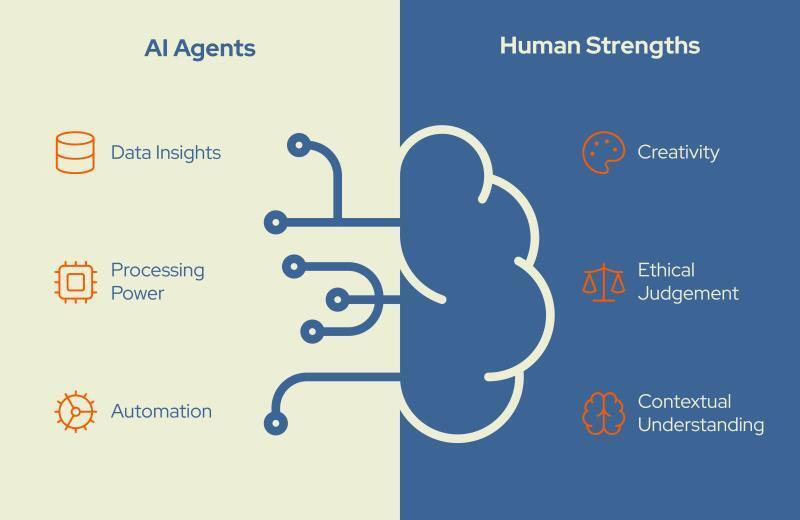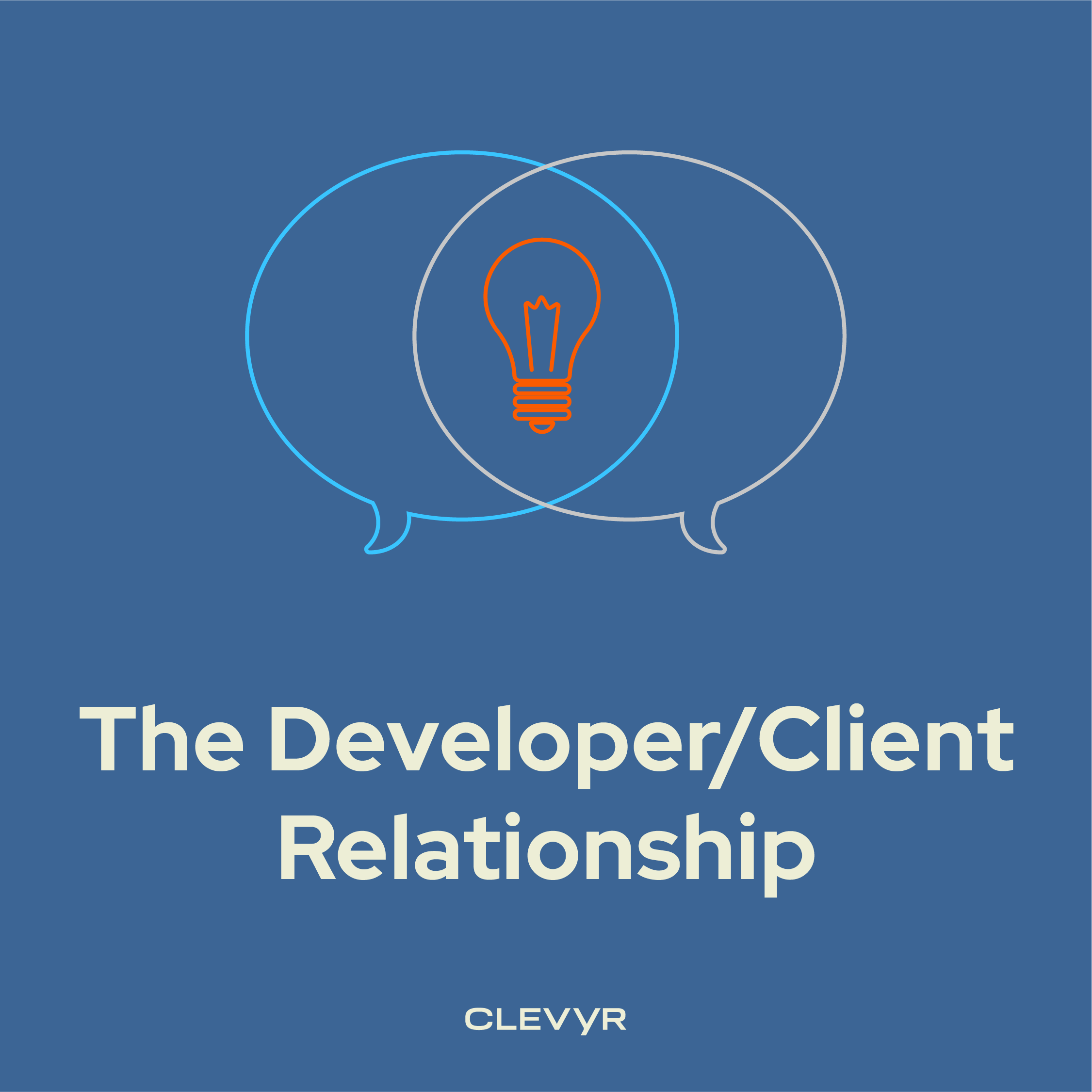From Automation to Collaboration
In the evolving landscape of artificial intelligence, autonomous AI agents are generating significant attention. While early AI applications focused on automating repetitive tasks, the current trajectory emphasizes the creation of synergistic partnerships between humans and Agentic AI systems—AI that not only executes commands but also thinks and acts independently. This collaborative approach, often described as human-in-the-loop, leverages the unique strengths of both parties: human creativity, empathy, and ethical judgment, combined with AI’s unparalleled data processing power and operational efficiency.
This evolution isn’t emerging in isolation. As our CEO, Matt Williamson, highlighted in his blog post, Beyond Chatbots: The Rise of AI That Thinks and Acts, AI is transitioning from reactive, task-based systems to proactive, decision-making agents. Matt’s insights laid the groundwork for understanding this shift—now, it’s time to explore the next step: how humans and these AI agents can work together as partners.
This collaborative evolution signifies a shift from viewing AI as a mere tool for automation to recognizing it as a true partner in problem-solving, decision-making, and innovation. Together, humans and AI can tackle complex challenges that neither could manage alone.
The Benefits of Human-AI Collaboration
Modern enterprises face increasingly complex challenges that demand nuanced, adaptive solutions. The collaborative interplay between AI agents and humans provides a compelling approach to tackling these challenges, leveraging the unique capabilities of each:
-
Enhancing Decision-Making:
AI agents generate data-driven insights by processing and analyzing vast amounts of information. However, human oversight remains essential. Consequential decision making requires us to apply contextual understanding, interpret subtle cues, and make decisions that align with our ethical, cultural, and strategic priorities. As powerful as our AI tools are becoming, these decisions require a human touch. -
Boosting Productivity:
AI agents handle routine and repetitive tasks in the background, allowing humans to focus on higher-value strategic initiatives. Importantly, this isn’t about removing humans from the loop—these agents actively engage human collaborators by surfacing questions, clarifying anomalies, or seeking human judgment on ambiguous cases.
This isn’t about removing humans from the loop—these agents actively engage human collaborators.
-
Fostering Innovation:
When humans and AI agents collaborate effectively, they foster an environment ripe for novel solutions and services, combining AI’s data exploration capabilities with human ingenuity and domain expertise.

Consider, for example, the field of healthcare. AI agents are already assisting physicians by analyzing datasets and medical images to identify potential diagnoses, but it’s the human doctors who integrate these findings with patient histories and nuanced clinical judgment to determine the most appropriate course of action, ensuring decisions are data-informed but human-centered.
The Challenges in Human-AI Collaboration
While the benefits of human-AI collaboration are substantial, integrating AI agents into human workflows presents unique challenges:
-
Trust and Transparency:
AI agents operate with complex algorithms and decision-making processes that may seem opaque to users. Without clear explanations, skepticism arises about how and why certain decisions are made. To build trust, it’s essential to design explainable AI systems and ensure that agents can justify their recommendations and actions. -
Skill Gaps:
Effectively collaborating with AI agents requires a workforce that is equipped with the right skills. These skills aren’t just technical, but also interpretive and strategic. Employees need to be trained not only to use AI tools, but also to understand how and when to intervene, how to interpret outputs, and how to engineer prompts that guide AI agents toward optimal, accurate outcomes. -
Ethical Considerations:
As AI agents assume increasingly autonomous roles, the risk of unintended biases, ethical lapses, or discriminatory outcomes rises. It’s crucial to embed ethical principles into the design and deployment of these agents, ensuring their actions align with organizational values and societal norms.
Ethical AI agents are about more than the technology. Ethical use of AI depends on the people who interact with these systems. Training employees to identify, interpret, and report questionable outcomes is essential for maintaining accountability and preventing harm. By equipping human collaborators with the right tools and knowledge, organizations can create a feedback loop that reinforces ethical behavior, both in AI agents and human decision-making.
Addressing these challenges isn’t merely a technical hurdle; it requires a coordinated approach involving change management, continuous education, and the integration of ethical AI design principles. Successful collaboration means creating an environment where AI agents operate transparently, humans are empowered and skilled, and decisions reflect shared values.
The Future Outlook
What does the future of human-AI collaboration look like? It points toward a world of increasingly integrated and seamless partnerships between humans and AI agents. These partnerships won’t just be reactive or transactional; they’ll be proactive, adaptive, and dynamic, with humans remaining in the loop to guide, refine, and oversee AI-driven processes.
Here’s what we can expect:
-
Adaptive AI Systems:
Future AI agents will become more than static tools—they’ll be adaptive systems capable of learning and evolving with ongoing human interaction. As these agents process feedback and insights, they’ll adjust their behaviors to align better with organizational goals, user preferences, and ethical considerations. -
Enhanced User Interfaces:
Collaboration will be facilitated by more intuitive and natural interfaces, allowing humans to interact with AI agents effortlessly. Expect voice-driven commands, contextual dashboards, and even immersive experiences (like AR/VR) that make human-AI collaboration more accessible and effective. -
Ethical AI Frameworks:
Again, as AI agents become more autonomous, ethical challenges and considerations increase the need for robust ethical frameworks. These frameworks will ensure that decisions made by AI are transparent, explainable, and aligned with societal norms. Organizations will increasingly adopt practices like bias audits, algorithmic transparency, and ethics committees to safeguard human values.
The future isn’t just about what AI can do—it’s about how humans and AI agents can learn from each other, evolving together to create solutions that are both innovative and responsible.
It’s about amplifying human potential.
What Does This All Mean for Me?
Human-AI collaboration isn’t about replacing humans—it’s about amplifying human potential. By embracing this synergistic partnership with AI agents, enterprises can unlock new levels of efficiency, innovation, and adaptability.
The organizations that will thrive in the future are those that understand how to seamlessly integrate AI agents into their workflows, creating a harmonious balance of human intuition, creativity, and ethical judgment with AI’s processing power, speed, and adaptability.
As we move forward, the question isn’t whether AI agents will become part of our workflows, but how effectively and responsibly we will collaborate with them to build a future that’s not only smarter but also more human-centered.
Looking to Learn More?
Check out:
- A Guide to Specialized AI Models
- Ethics & AI Technology
- AI Predictions
- The Future of CRM: AI and Automation
Want to learn more about the emerging trend of Agentic AI, and what it might mean for your business? Click to download our white paper From Automation to Autonomy: The Rise of Agentic AI in Business.


